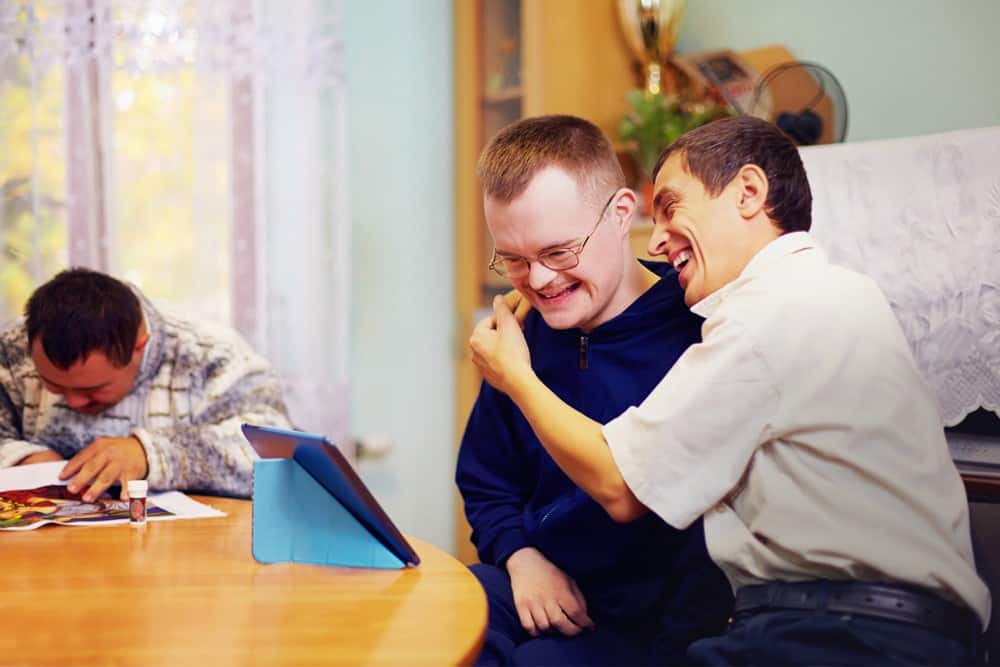
What is a child-centred approach to safeguarding? It’s the approach needed to ensure the best possible outcome for young victims of neglect and abuse.
It involves listening to children, keeping them informed and considering their feelings when making safeguarding decisions.
This blog explains how to apply the child-centred approach in practice, and steps you can take to ensure safeguarding concerns are handled appropriately and with the child’s best interests in mind.
What Is a Child-Centred Approach to Safeguarding? – Key Takeaways
- A child-centred approach ensures that safeguarding decisions prioritise the child’s welfare and reflect their views and wishes.
- Safeguarding law and statutory guidance, including Working Together to Safeguard Children (2023), require adults to keep the child’s voice central in all safeguarding actions.
- You should listen carefully to children, provide clear information and involve them in decisions.
What Is a Child Centred Approach?
A child-centred approach places the child’s needs, views and best interests at the heart of safeguarding decisions.
In practice, this involves listening to what the child says, checking they understand what is happening and considering their wishes when making decisions regarding their wellbeing.
Organisations are required to take a child-centred approach to safeguarding. The concept comes up in multiple pieces of legislation and statutory guidance:
- Keeping Children Safe in Education (KCSIE) sets out what schools and colleges in England must do to safeguard and promote the welfare of children. While not technically legislation, KCSIE is statutory guidance, meaning education providers must follow it. The most recent version reinforces that safeguarding must always be child-centred, meaning the child’s best interests come first in every decision and interaction.
- Working Together to Safeguard Children 2023 sets expectations for how agencies protect children in England. It requires you to prioritise the child’s voice when making safeguarding decisions and stresses that effective safeguarding often means working with the whole family, not just the child in isolation.
- Children Act 1989 requires local authorities to take a child’s wishes into account when providing services under Section 17 or when taking protection action under Section 47. These duties also apply to looked-after children and those in police protection.
- UN Convention on the Rights of the Child (UNCRC) commits the UK to upholding children’s rights, including the right to be heard and to receive information about matters that affect them.
Safeguarding Training Courses
Understand safeguarding duties and best practices. Our online safeguarding courses run from Level 1 awareness to Level 3 DSL training. Learn how to identify abuse and meet your responsibilities to safeguard children or at-risk adults.
Why a Child-Centred Approach Is Important
At-risk children can’t always make decisions in their best interests. They may not understand the reality of their situation or have the emotional maturity to make decisions that protect them in the long term.
For example, it can be difficult to isolate a child from an abuser if that person is also a close family member. The child may have a misplaced loyalty or, depending on the length of abuse, may think it’s normal behaviour.
So, adults must ultimately make safeguarding decisions on a child’s behalf, but with as much involvement from the child as possible. It’s been shown that adopting this approach leads to better outcomes, as children are more likely to understand and accept what the adults around them are doing to help.
Delivering a Child-Centred Approach
Everyone who works with children has safeguarding duties. Even if you’re not responsible for making decisions, it’s important to understand what the child-centred approach is because how you relate to children has safeguarding implications.
If children trust you, they’re more likely to be open and forthcoming with their concerns. And early action based on clear, reliable information is always best for the child.
We’ve set out the principles of the child-centred approach below, along with examples of what it might look like in everyday interactions.
1. Listen and Take Children Seriously
If a child chooses to disclose something to you, listen carefully without interrupting, hurrying or challenging them. This way, you’re more likely to get an accurate account of the situation while also building the relationship.
In practice:
- Give the child space and time to talk, using calm body language
- Avoid leading questions or expressing shock
- Acknowledge their feelings with phrases like “That sounds really difficult” or “I’m glad you told me.”
- Make a clear note of what they say and share it promptly with the designated safeguarding lead (DSL)
2. Respect the Child’s Voice But Protect Their Welfare
In safeguarding, it’s important to balance listening with acting. So, while you should always acknowledge the child’s feelings and wishes, their welfare comes first. Be prepared to act when there’s a risk of harm.
In practice:
- Reassure them that the situation is not their fault and that adults are there to help
- Show that you understand what the child wants, but don’t promise anything, especially confidentiality
- Explain gently why certain actions (such as telling another adult) are necessary for their safety
3. Communicate Honestly and Clearly
Transparency is key to the child-centred approach. Be honest with children and explain in age-appropriate terms what steps are being taken and why.
In practice:
- Make it clear that anything children share with you can be passed on to other adults
- Use plain, concrete language to describe next steps (“I’m going to talk to someone whose job it is to help keep you safe”)
- Check understanding by asking the child if they have questions or need something repeated
4. Act Promptly and Proportionately
You must know your organisation’s designated safeguarding lead and reporting channels. Notify your DSL of any concerns as soon as possible. Acting quickly can prevent future harm and also show children they’re a priority.
In practice:
- Follow your organisation’s safeguarding procedure immediately after receiving a disclosure or concern
- Pass the information to the DSL or equivalent – do not attempt to investigate or gather “proof” yourself
- Record factual details only, including dates, times and what was said – include direct quotes from the child wherever possible
5. Build Trust Through Consistency
Make consistent efforts to build appropriate relationships with all the children around you. Over time, they’ll see you as someone they can be honest with, should a safeguarding issue arise.
In practice:
- If you told a child you would check something, make sure you do and provide an update
- Maintain professional boundaries while showing empathy
- Be visible and approachable; small, consistent actions like asking a child how they are every day build relationships
6. Work Together for the Child’s Best Interests
Safeguarding is most effective when agencies and individuals coordinate their efforts, so a child-centred approach requires collaboration.
In practice:
- Share all relevant information with the DSL, pastoral teams or external agencies as appropriate
- Contribute observations that might help others build a clearer picture of the child’s needs
How Training Embeds a Child-Centred Approach
Everyone who works with children has safeguarding duties, which means everyone who works with children needs safeguarding training.
Our online Safeguarding Courses address this need. There are three versions of each course, designed for different levels of responsibility. Every one equips staff to recognise concerns early and escalate cases as needed to protect children’s welfare and uphold legal duties.
Through targeted training, you can create a more consistent approach to safeguarding and ensure that every staff member understands how to handle concerns or disclosures.




















